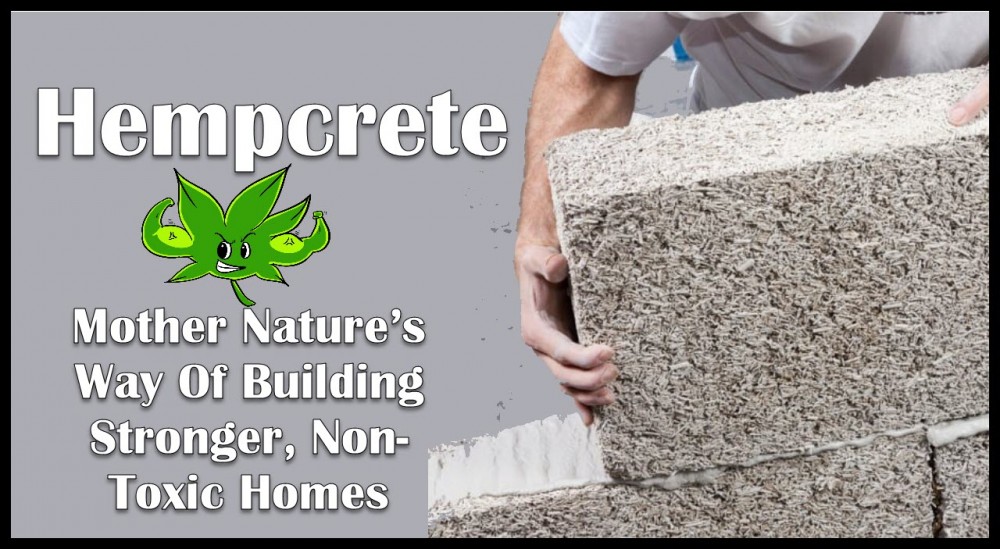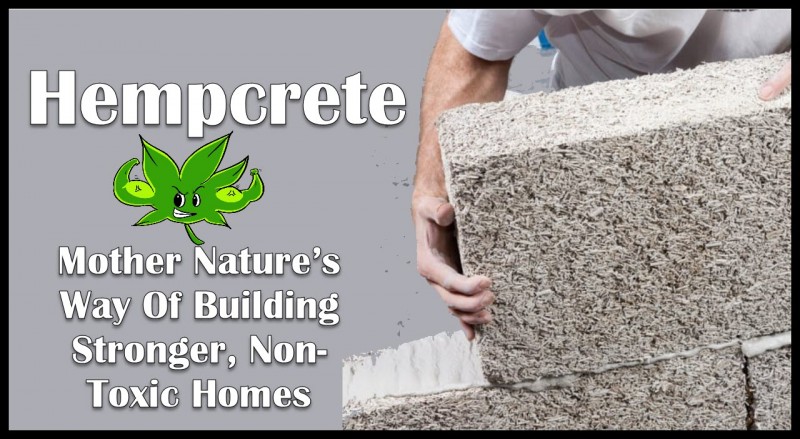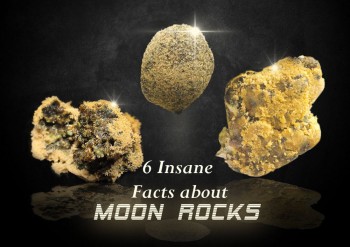Hempcrete: Mother Nature’s Way Of Building Stronger, Non-Toxic Homes

As you’ve already noticed by now, hemp has been all over the news.
Since the Farm Bill was passed in late 2018, this humble plant, a cousin of cannabis, has been making headlines for its ability to produce high amounts of healing and non-intoxicating cannabidiol (CBD).
Although there’s no doubt that CBD is a great addition to any wellness routine even if you aren’t sick, the hemp plant that it comes from is also an excellent eco-friendly alternative for many things…. Including making homes. As one of the world’s most versatile and sustainable materials, hemp is also an ultra-durable alternative to concrete, in a form known as hempcrete.
A quick browse on the internet will reveal that hempcrete companies are sprouting like seeds. The technology isn’t new, but there’s a great deal of interest in the possibilities of using hempcrete. In fact, University of California, Riverside researchers were just awarded a grant of over $12,000 to investigate innovative ways of processing hemp for use in hempcrete. The students will be focusing on a cleaner, more eco-friendly way to process the hemp fibers for its pulp.
Even though hempcrete is a sustainable and viable solution for building materials, the current process of producing it often means that manufacturers leave behind toxic pollutants, particularly known as “black liquor”. Black liquor contains chemicals, sulfides, and lignin residues.
“Our project goal is to produce hempcrete as a lighter, stronger, and more environmentally friendly alternative to conventional fossil-based concrete. The students are trying out different compositions and processing conditions to create green chemistry,” explained Charles Cai, a professior and research engineer in the Center for Environmental Research and Technology.
Even if the hemp plant already absorbs a lot of CO2 from the atmosphere, producing and using it in general are very low impact. The quantity of carbon they absorb in its lifetime eclipses the energy consumed in constructing hemp structures, which is one of the reasons why it’s more environmentally friendly than concrete. The process involved in making concrete uses and wastes a serious amount of water, and it oftentimes also leads to water pollution from extracting to application.
If you’re looking for alternative means to concrete, you should definitely look up sustainable hempcrete companies. Here’s what else you should know about hempcrete.
Hempcrete is by no means anything new: in fact, it was first discovered in France as far back as the 6th century. This composite material known as shiv comprises the inner part of the hemp plant; when it’s mixed with a lime-based binder and water, then you get hempcrete.
This part of the hemp plant is rich in silica, which is a unique attribute of hemp compared to other types of natural fibers. Silica is effective in binding everything together, which is why hempcrete is so durable.
Benefits of Using Hempcrete
Hempcrete provides many benefits for homeowners:
Insulation: When you use hempcrete in your walls, you can enjoy much better insulation. Hempcrete has better thermal properties compared to other types of building materials.
Constant temperatures: Whether you live in cool or warm climates, hempcrete has the ability to stay in constant temperatures. That’s because of its insulating properties as well as thermal mass. This will come in handy for people who live in places that get REALLY hot during the summer, or for places that get extremely cold and snowy during the winter.
No dampness in walls: Since hempcrete is breathable, you don’t have to worry about dampness. Both the hempcrete and the lime plaster work to absorb moisture in the air especially during high humidity; the moisture is then released back into the air when humidity levels drop. As a result, mold growth is a thing of the past because hempcrete keeps humidity at levels that prevent bacterial growth.
Non-toxic: There is no need for fungicides or pesticides to grow hemp. Because of this, no environmental damage occurs. On the other hand, production of conventional construction materials involves toxic and synthetic chemicals. These can result in dampness while releasing toxic chemicals into your home.
Fire resistance: Houses made with hempcrete take much longer to burn down. Blocks made out of hempcrete char a little when they’re burnt, but they’re known to be more fire resistant particularly when you have thicker hempcrete blocks.
As we usher into the age of a more environmentally conscious society, it’s important to watch what we use in our homes. It’s no longer just about what we eat and drink, but making more conscious decisions about what we build with can have a significant impact on our health and the environment.
LOVE HEMP? READ THESE..
ARE HEMP BUILDING MATERIALS THE FUTURE, READ THIS!
OR..
HEMPCRETE IS THE FUTURE OF BUILDING SAYS NEW REGS!
OR..
8 WAYS HEMP CAN SAVE THE PLANET, READ THIS...










